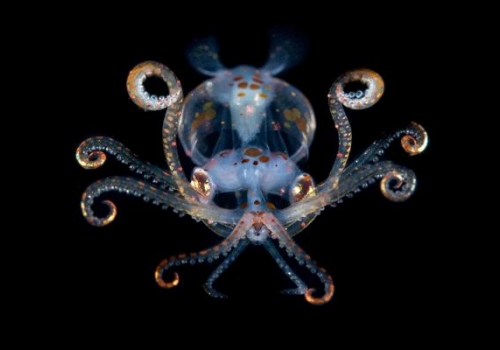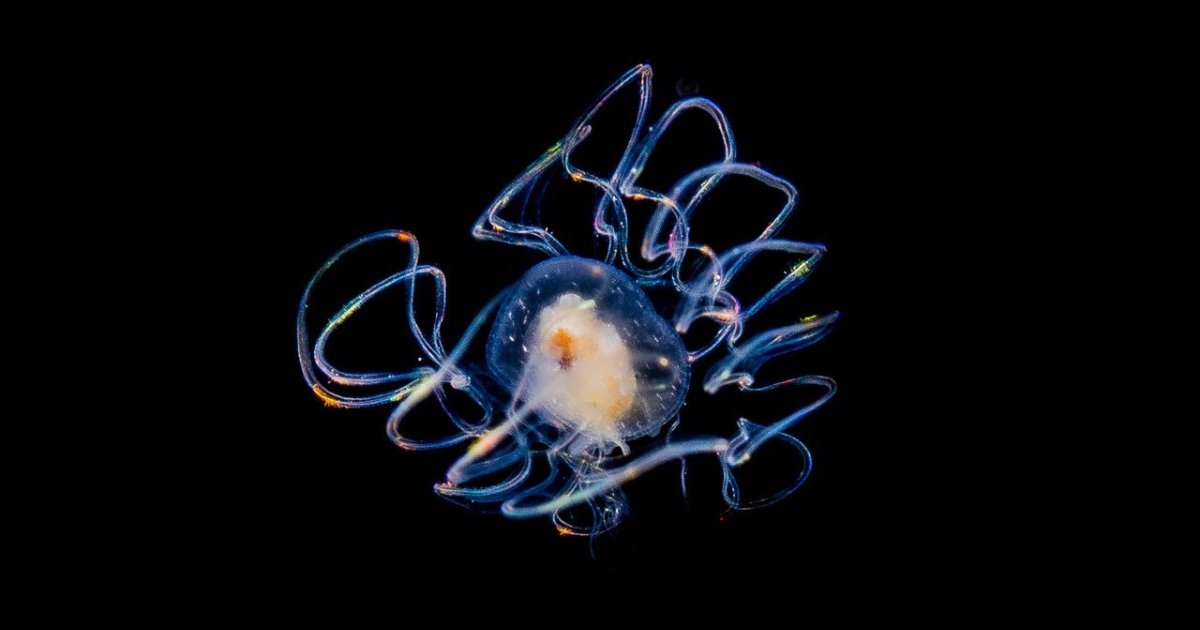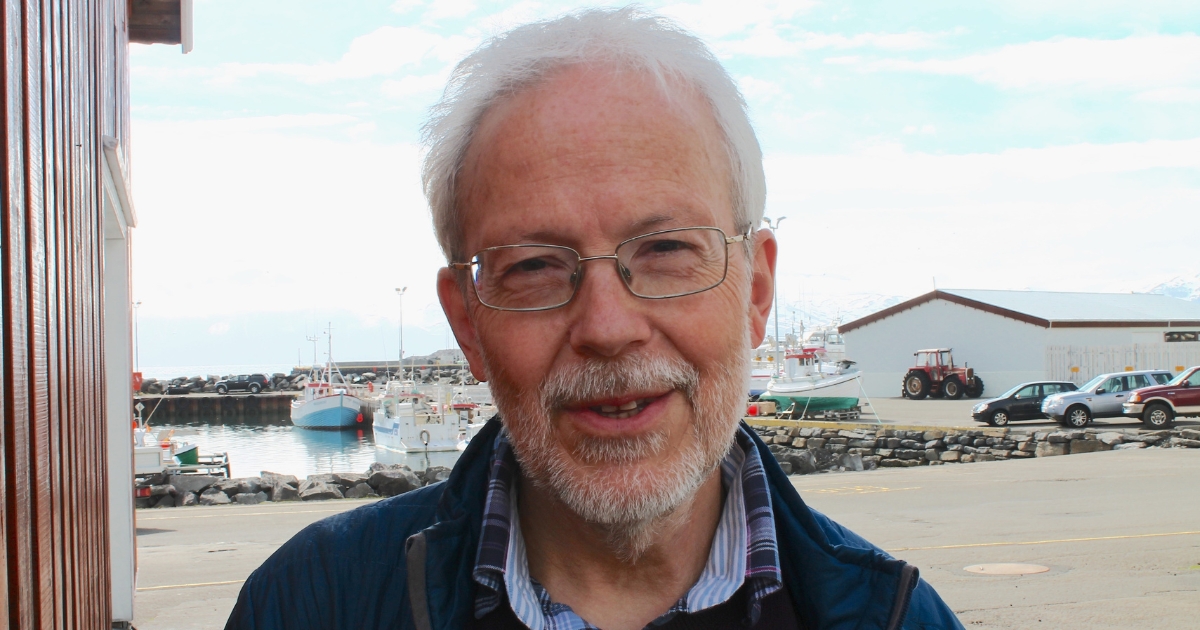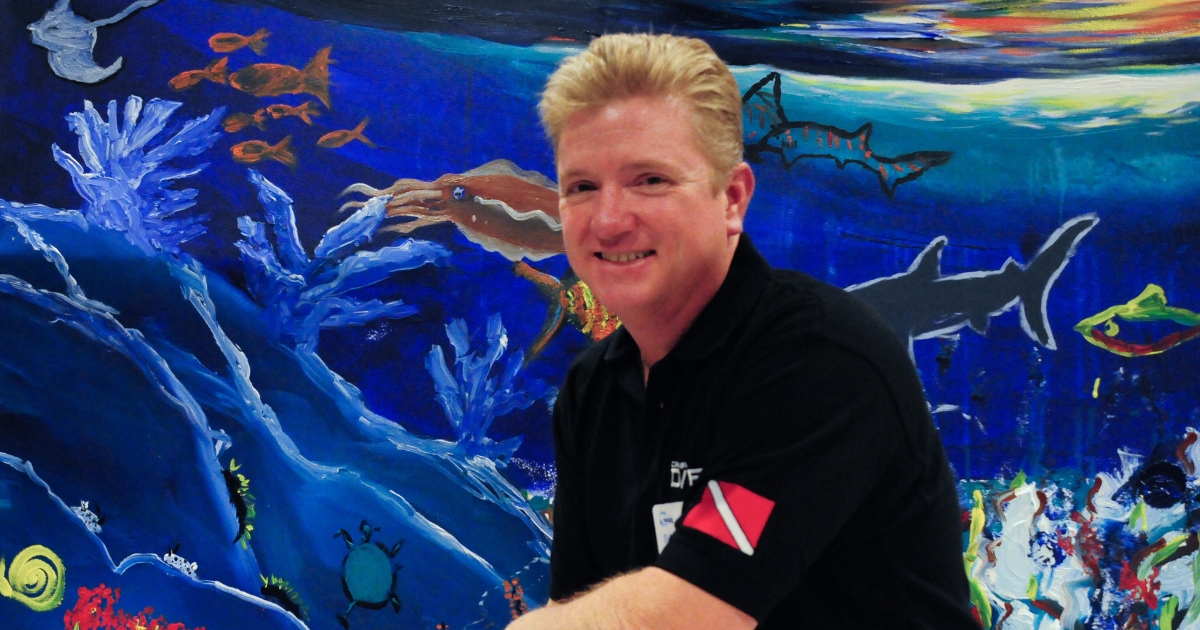How Healthy Aquatic Life Below our Keels can Help Save the Planet

A few months ago I reviewed an interesting book titled Rewilding the Sea by Charles Clover, the co-founder of Blue Marine Foundation, for OnboardOnline.
Shortly after I received a note from renowned ocean scientist and conservationist Erich Hoyt asking if I would like to receive a pre-publication review copy of his latest book, Planktonia. How could I refuse? Having now read and thoroughly enjoyed it, I’m happy to give some insights into the book’s fascinating content.
'The Nightly Migration of the Ocean’s Smallest Creatures'
Planktonia’s author uses the above sub-title on the front cover to explain the theme of his publication, further describing it as a ‘deep dive into the night-time ocean with a magnifying glass and a waterproof pen’. Personally, I would highly recommend the book to sit on the coffee table in the saloon of any yacht, and I’m sure that anyone on board who picks it up will not be able to put it down until they have read it.
Erich Hoyt is a research fellow at Whale and Dolphin Conservation, and co-chair of the IUCN Marine Mammal Protected Areas Task Force. He has previously won awards for some of the 25 books he has written about various ocean inhabitants and marine conservation. Calling on decades of detailed research alongside his fellow scientists, Erich’s books have done much to raise public awareness about these important sea creatures. For instance, his previously published titles include the Encyclopedia of Whales, Dolphins and Porpoises and Orca: The Whale Called Killer.
The stunning underwater photography in the book reveals a host of fascinating rarely seen sea creatures, mostly larval planktonic marvels - many trillions of tiny vertical migrators in endless combinations of shapes and colours that come to feast every night under the cover of darkness.
The book also explains how the night diving photographers have developed artificial light sources to minimise the disruption of the plankton’s natural movements. It’s impressive how the highly magnified images in the book were captured in the most challenging environment for underwater macro photography, where no daylight exists to illuminate the subject matter. A tiny Sea Slug, for example, measuring just an eighth of an inch long can be seen across a whole page in high definition with brilliant colours. The real pleasure of these illustrations is being able to see aquatic creatures that could never be observed in such detail with the naked eye.

‘Sea slug photo © Mike Bartick in Planktonia by Erich Hoyt, Firefly Books.
The importance of phytoplankton for survival of life on earth
In the book’s first chapter, Erich explains how plankton can be plants (phytoplankton) or animals (zooplankton). Phytoplankton is produced by energy from the sun and is described as ‘the source of the ocean’s productivity’. Due to this growth occurring near to the ocean surface, the zooplankton migrates into the upper waters every night for a feeding frenzy. As daylight approaches, they descend into the depths to avoid being eaten themselves by predators.
Phytoplankton is not only an essential food source for zooplankton, but it also creates a massive carbon storage bank. Furthermore, it supports the entire food chain, as all fishes depend on the zooplankton eating the phytoplankton, even whales! It therefore follows that keeping the oceans healthy and contributing to sustainable life on Earth very much depends on maintaining healthy and abundant phytoplankton, as it is also responsible for producing 50 per cent of the oxygen we breath.
More data on the importance of phytoplankton as a life support system for the planet has emerged in the recently published International Journal of Environment and Climate Change. The scientific research argues that everything has changed in the last few decades due to human induced pollution of the oceans from chemicals, fertilisers, plastics, soot, hydrocarbons etc. This has resulted in a 50 per cent loss of marine plankton since the 1950s, substantially degrading the sea surface microlayer (SML) which is the boundary interface between the atmosphere and the world’s oceans. Although the increase in carbon dioxide from fossil fuels is implicated, there is ever more convincing evidence that ocean degradation is a major contributor to climate change, as it has increased humidity and reduced cloud formation, thus raising temperatures.
Marine plankton still makes up over 60 per cent of all biomass in the oceans and can potentially double in volume every three days. So, if we stop polluting the marine ecosystem, the plankton will recover very rapidly and can almost certainly help to mitigate climate change.
Are the latest COP meetings doing enough to protect the oceans?
Planktonia landed on my doormat at a very auspicious time last December, right in the middle of the two-week UN Nature Summit held in Canada, sometimes referred to as COP 15. The real question is, have these summits resulted in the necessary increased actions in favour of ocean conservation, and the critical revival of aquatic biodiversity?
They certainly should have, but I think it’s fair to say that the jury of public opinion still needs some convincing. At the latest UN Nature Summit in Montreal Canada, they did at least set a high level 30 X 30 target (30 per cent conservation protection of both land and sea by 2030). That’s easy to say as a slogan, but it’s far from easy to get international agreement to its implementation.

Author Erich Hoyt
Fast forward to the last day of the summit, and after seven hours of wrangling into the early hours of the morning an agreement was finally reached. After being influenced one way or the other by nearly 200 countries and their lobbyists, the final wording did basically commit governments to conserve nearly a third of the planet for nature by 2030. This included demands for coastal areas, wetlands and coral reefs to be properly and actively protected, rather than being just a wish list on paper. Also preventing, reducing, and working towards eliminating plastic pollution.
Unfortunately, the required actions in the final agreement are non-binding on governments. This has prompted environmental action groups to criticise the plan as being too weak on the basis that ‘unenforceable = unachievable!’. There is some evidence of that when looking back at previous UN Conferences, as they have all failed to deliver what was promised. For instance, in 2010 the UN Convention on Biological Diversity agreed to protect 10 per cent of the world’s ocean by 2020. But actually, as of today 8.1 per cent is protected globally, and only 2.4 per cent of the ocean is properly guarded from overfishing or mining.
Can the ungovernable ocean space become more regulated?
Another so far insurmountable problem is how to protect 30 per cent of all the world’s oceans. This is an important question, as most of the global ocean lies outside of the 200 nautical mile national jurisdiction zone. If the 30 per cent target is to really work everywhere, then it would have to be globally enforced. However, as everything beyond the national sovereign authorities is high seas, this constitutes most of the oceans…which no nations have any responsibilty for!
After failure in the last round of UN talks aimed at finding solutions for this ‘no man’s sea’ scenario, they are reconvening again in March 2023 to try again. This will be quite a challenge because currently 64 per cent of the high seas lie beyond territorial limits, and only 1.2 per cent of that is protected. That’s a gigantic leap to 30 per cent, so let's hope for the sake of the planet, that at least some extension of marine conservation responsibility beyond national limits can be agreed and enacted.
Charles Clover, representing BLUE Marine Foundation, was campaigning at the Summit in Montreal where he re-emphasised the theme of Rewilding the Sea. He said: “Leaving the sea alone more of the time is the only way to invest in the future, and nature recovers astonishingly quickly if it is left to its own devices.” Charles referred to what he calls ‘the tendrils of hope’ which can spring positively from the 8 per cent of the oceans that are already protected. Also, the continued dedication of Foundations and NGO’s who work tirelessly for the sea. And the ‘bragging rights’ of nations who do successfully implement the agreed conservation actions, as this will put competitive pressure on other countries to up their game.
Only time will tell, but as Charles concluded: “Conservation works for almost everyone, and failure to agree a framework in Montreal would have been a disaster.”
Rewilding and its positive influence on carbon reduction
These days the scientific community is becoming much more vocal about how all the ocean animal species and the natural plant growth that supports them can be a really positive factor in reducing the climate change phenomena. In fact, it’s just as important as phasing out fossil fuels. Some scientists are theorising that bringing back wildlife to pre-industrial levels both terrestrially and aquatically could supercharge climate change mitigation. This is something of a radical departure from some of the existing scientific theories on the topic.
They are calling this ‘animating the carbon cycle’, or ACC for short. It basically focuses on the critical role that wild animals play in controlling carbon exchange between ecosystems and the atmosphere. Whilst this applies both on land and at sea, obviously there is a lot to be gained from enabling more of this natural activity in our aquatic environment, due to the oceans covering over 70 per cent of the earth’s surface.

Photographer Mike Bartick
Emerging significance of the ocean’s ‘twilight zone’
One example of ACC which has lacked full understanding and protection in the past is in the part of the ocean that lies between 200 and 1000 metres below the surface - no chance of going aground there even with the largest megayacht! This ‘twilight zone’ makes up around 20 per cent of all the world’s seas by volume and is where the largest group of vertebrates on the planet live. They are called the mesopelagic fish, apparently making up around 95 per cent of all fish in the ocean and estimated to weigh around 10 billion metric tons in total.
Ocean Conservation action groups were well represented at the Cop27 Climate Summit held in Egypt last autumn. For instance, BLUE Marine Foundation partnered with the Global Rewilding Alliance (GWA) in calling for a global moratorium on mesopelagic fishing, thus seeking to prevent the environmentally damaging exploitation of the deep sea and the twilight zone. This was explained as a ‘little-known planetary wonder,’ due to its naturally occurring influence on the carbon cycle.
So how do these phenomena take place? Well again, as with the plankton, every night a massive migration takes place, as millions of tons of fish move upwards towards the ocean’s surface. There they feast on the same tiny aquatic plants that thrive on the carbon from the atmosphere. After feeding, the fish return to deeper waters to avoid daytime predators. When they are back in the depths, they breath and defecate, effectively acting as a carbon shuttling process which is referred to as the ‘biological pump’.
Although this is an important contributor to the ocean’s natural ability to mitigate climate change, it still needs more research to completely understand the fish-based contribution to carbon export flux at regional to global scales. However, studies carried out last year estimate that something like 16 per cent of the total carbon sequestered into the ocean depths comes from these fish excretions and respirations. This amounts annually to around 1.5 billion metric tons.
Despite these migrating volumes being huge, they are made up of relatively small fish which so far have not been a target for the fishing industry. However, GWA and BLUE are actively campaigning to prevent a possible future change of emphasis, as it is possible that the mesopelagic fish could be harvested as an ingredient of fish oil or meal. This continued expansion of overfishing could put the entire marine carbon ‘biological pump’ activity at serious risk if it's not effectively controlled.
Marine Protected Areas: the key to reviving ocean biodiversity
I’ve certainly learned a lot from some of the above reading and research, and I hope that OnboardOnline readers will have found it interesting too. There is a huge amount more to discover in Planktonia, which is great value at $35.00 for 176 pages of highly educational graphically explicit content.
One of the contributors to the book is Mike Bartick, a diver / photographer who started bluewater diving in the waters off southern California, and later became totally infatuated with the area in the Philippines known as Anilao. The whole peninsula there, known as the Verde Island Passage Marine Protected Area Network, is a global hotspot for biodiversity with over 60 Marine Protected Areas (MPAs.) Here there exists 76 per cent of the world’s shallow water reef building species, and 37 per cent of its reef fish species; an incredible testament to the value of leaving aquatic nature to flourish without being hampered by human intervention.
Mike’s comments in the book about the nature he discovers on his dives are an appropriate way to round off this article: “Plankton are some of the smallest organisms in the world that play some of the biggest roles. They carry the weight of the planet on their shoulders, and many people just don’t know it, even though they should thank them for every other breath they take.”
“The deep ocean is like the eighth continent and the biggest one too. If you look across the ocean you might see a sailboat, and the rest looks like a watery desert. But when you stick your head below the surface it's just this unbelievable place that’s completely wild. Every cubic yard is full of pulsing nature moving up and down, for some it must be the equivalent to scaling the height of Mt. Everest and back every day.”
My final comment after writing this article: Sitting on the deck and peering casually into the water will never again be the same for me. A new imagination has been stirred by the ‘cast of trillions’ and how much we all depend on them for our survival!
Main image credit: Sharpear Enope Squid photo © Mike Bartick in Planktonia by Erich Hoyt, Firefly Books.

Post your comment
You cannot post comments until you have logged in.
Login to post a commentComments
No one has commented on this page yet.
RSS feed for comments on this page | RSS feed for all comments